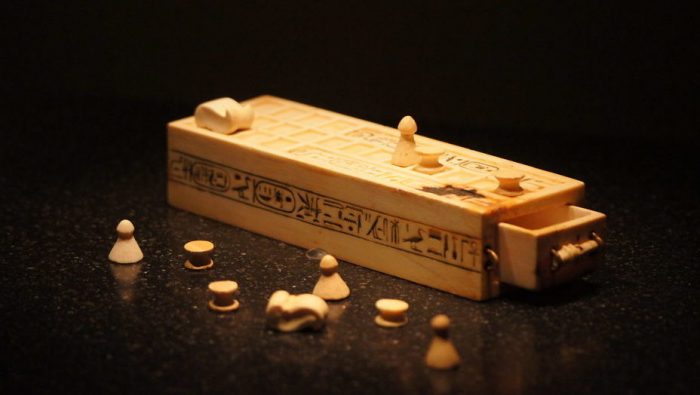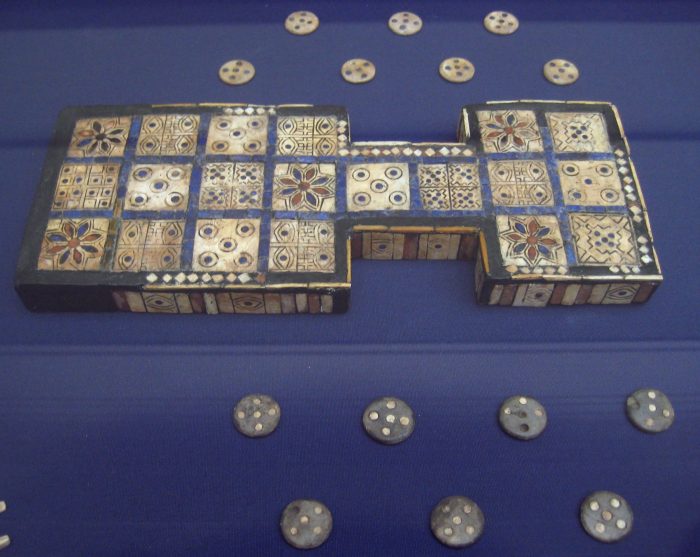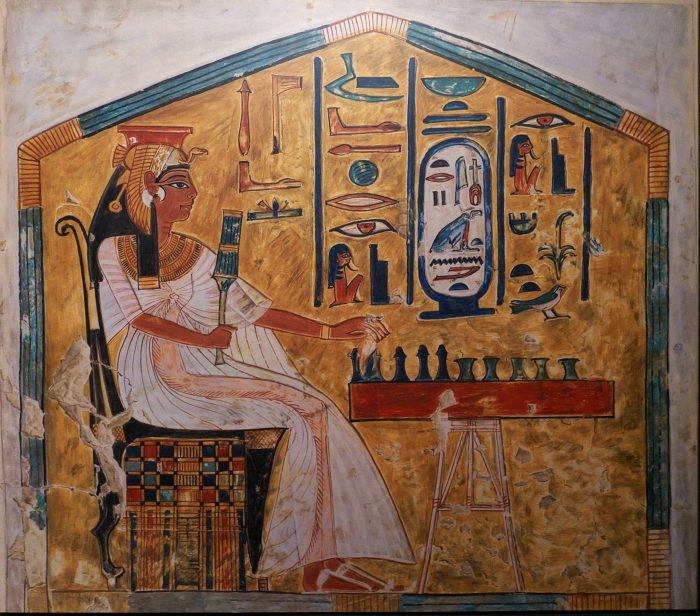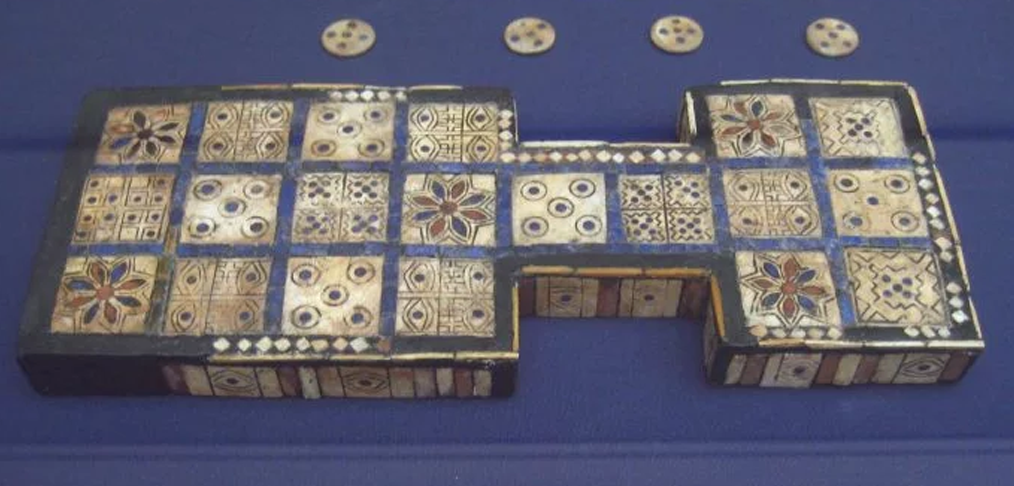The board game, a great History! 1/2
Of course, games are not exclusive to humans. Animals also play: dogs love to fetch sticks, dolphins sculpt air bubbles, primates even play with objects. Playing is a social activity, one of the ways that living beings communicate with each other. And a little reminder from your philosophy classes (it’s not that long ago, right?): Man is a social animal.
This explains why the game is an important cultural element that contributes to getting Man out of his animal state: it is no longer a matter of survival but a leisure activity, thus an activity that actualizes his humanity. It is in this way that games are universal but above all timeless: they have existed since the beginnings of civilization. Let me tell you the history of the board game, from the very first ancient traces to the current game trends, through the evolution of the game mechanics and equipment.
Ancient times: the first steps of the board game
Once upon a time (sorry, that’s how stories are told) in the eastern Mediterranean in ancient times. That’ s going back a bit, isn’t it? Anyway: this is when we find the first evidence of the origins of the board game, but it’s not surprising that the dates correspond to the invention of writing, around 3,500 BC. Indeed, we can imagine that Man has been playing since the very beginning, as early as prehistoric times: he probably amused himself by drawing in the sand or the earth and by moving small pebbles and seeds, signs that are of course impossible to trace today. We will have to make do with the first dice and counters found in Turkey and dated at -3000 years by archaeologists.
The opening of the tombs of Egyptian pharaohs have also revealed the secret of the first board games, which are also represented by hieroglyphs: “Senet“, dating from -3100, and “Mehen“, around -3000.
Although historians have not yet agreed on the rules of Senet, it is known that it was a game of chance reserved for members of the royalty and supposed to prepare for death and the passage to the afterlife. A real version is on display in the Egyptian Museum in Cairo, among others, but if that’s a long way off for you, you can always get one of the many modern versions of Senet.

Mehen (or “snake game”) is a board game in the shape of a coiled snake, with a similar look to the game Goose (which was not created until the year 1600). Again, the rules are a matter of debate.
Perhaps you have already heard of the royal game of Ur? It appeared in Mesopotamia around 2100 BC and is the oldest board game still in circulation. We at LudoTech have our favorite anecdote about this game: the royal game of Ur’s board was double-sided. One side was used for Senet, and the other for Ur. Did we ever tell you that the OLEM game board is double sided? Coincidence…

These ancient games have in common their divine theme, their sacred scope and their mechanics, chance. And it is not just chance: at that time, Man put his life, his destiny and his salvation in the hands of the gods, and the will of the latter was then embodied by the dice and luck. The game is a moment of spirituality.

Another interesting fact is that traces of similar games, dating from the same period, have been found in very distant places. From Egypt to Azerbaijan, that’s a long way! It is a proof of the diffusion of board games, certainly by the commercial routes of the time, which makes it a very important cultural element. We can think that it was a means of interaction between civilizations that probably did not speak the same language. This shows that the essential notion of sharing and conviviality of the board game is not new!
We just got to ancient times and it’s already time to say goodbye. However, there is so much to say that we could talk for hours about the history of board games. So, if we have whetted your appetite and you are curious to read the rest, we’ll see you in the second part of the article very soon!
You can also find all our other articles here.

Subscribe to the Newsletter !
Express News : 19/03/24
A significant portion of the parts has arrived at the assembler,

GAMA Expo: Key Tips for Selling Your Board Game
At the beginning of March, the LudoTech team traveled to GAMA

LudoTech editorial manifesto 2024
In the ever-evolving world of board games, each day brings its



